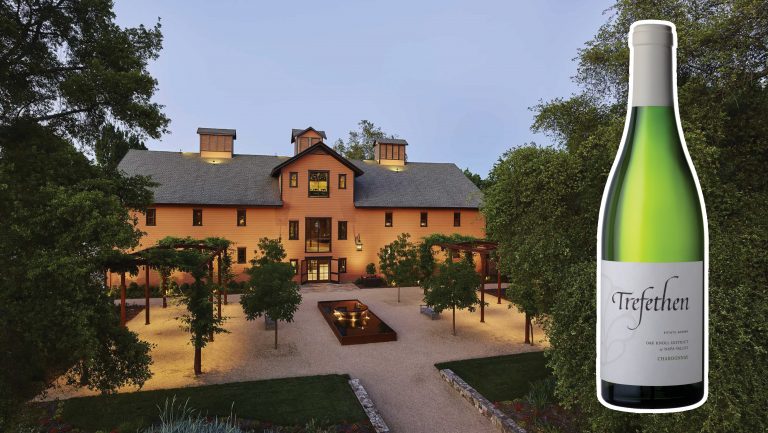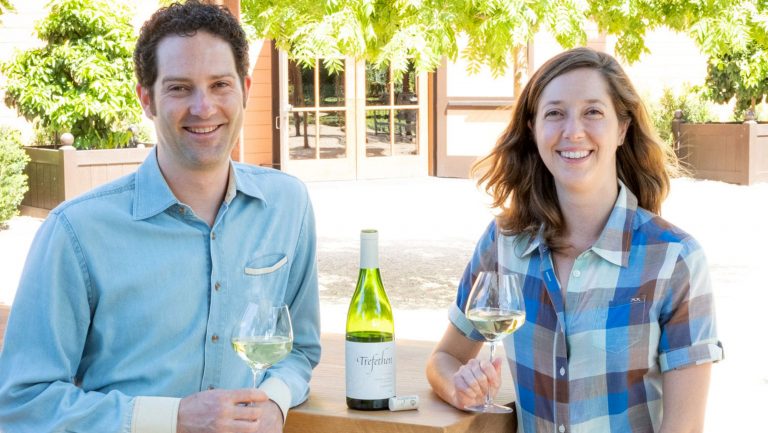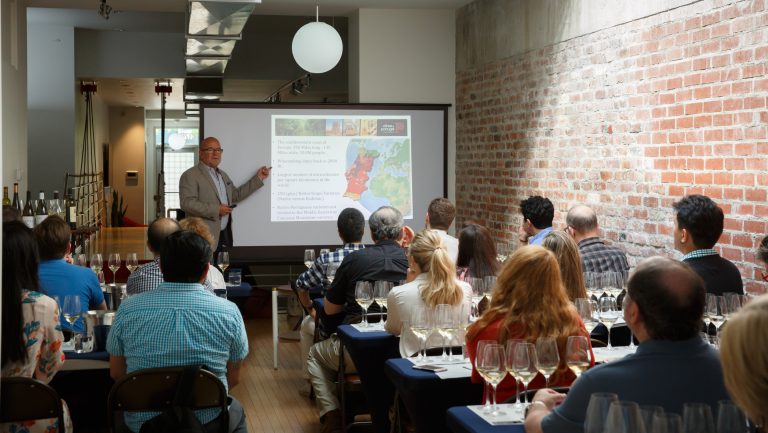The year is 1979. The Voyager 1 spacecraft has just captured the first photographs of Jupiter’s rings. Margaret Thatcher has become the first female Prime Minister of the U.K. The New Jersey-based Sugarhill Gang releases “Rapper’s Delight,” the first commercially successful hip-hop song. And in another historic first, a young California couple by the name of John and Janet Trefethen receive the surprise news that their Chardonnay—the winery’s third commercial release—has won an upset victory at the Gault-Millau Wine Olympics in Paris, claiming the title of World’s Best Chardonnay.
Featuring more than 300 entries from 33 countries, the competition would prove pivotal not just for the Trefethen family, but for the entire future of Golden State wine. A staple of the winery’s lineup ever since, Trefethen Family Vineyards’ iconic example was among the first to put Chardonnay on the map at a time when—difficult as it may be to believe—California claimed fewer than a thousand acres of the grape, compared to more than 90,000 acres today.
More than forty vintages later, the winery’s commitment to crafting world-class Chardonnay has never wavered. In fact, with siblings Lorenzo and Hailey Trefethen now at the helm, the Trefethen family’s pioneering vision has only sharpened. Case in point: the recently released 2021 Trefethen Family Vineyards Signature Chardonnay. Sourced entirely from the family’s estate grown Napa Valley fruit, it represents the latest update to a tradition the family has spent the past five decades slowly and carefully perfecting.

Don’t miss the latest drinks industry news and insights. Sign up for our award-winning newsletters and get insider intel, resources, and trends delivered to your inbox every week.
“Like all our wines, the Chardonnay we make today benefits from a multi-generational learning process,” says Lorenzo Trefethen. “We are extremely fortunate to have three generations who have looked after this specific property with a commitment to this specific grape.”
That Oak Knoll District Magic
It’s impossible to separate the signature brightness and vibrancy that have always defined Trefethen’s Chardonnay from the particular place the family calls home: Napa’s celebrated Oak Knoll District, located at the southern end of the world-famous valley. If anyone is equipped to explain the area’s unique attributes, it would be the Trefethens. After all, it was none other than Janet Trefethen who played an instrumental role in establishing the official Oak Knoll District AVA, which was approved in 2004 after a decade-long effort.
The Oak Knoll District’s distinct status as a cool-climate oasis at the southern end of the Napa Valley is a direct result of its proximity to the San Pablo Bay. On summer afternoons, as the hot air further up the valley rises into the atmosphere, cool marine air is pulled in from the south, creating what Lorenzo refers to as “our natural air conditioning.” These breezes and the cool fog that accompanies them often result in diurnal temperature swings of more than 40 degrees fahrenheit. Those chilly nights preserve freshness and acidity, and the area functions as an ideal incubator for the long, slow maturation of the family’s grapes. “It will be ten degrees cooler here on a warm day than in St. Helena or Calistoga,” says Hailey Trefethen.
The result of these singular climatic conditions? An intrinsic tension and balance that can be detected not only in the family’s linear, mouthwatering approach to Chardonnay, but also in the unusual structure and finesse of its reds. “That same cool climate which allows us to create this bright style of Chardonnay is also the key to understanding the elegant nature of our Cabernet Sauvignon,” says Lorenzo Trefethen. “It’s the secret behind the ageability of everything that comes from this property.”

Letting the Vineyard Speak
If the Trefethen mission has remained remarkably consistent over the years—namely, to distill the purest possible expression of their estate grown fruit and tell the story of their own particular plot of earth—that doesn’t mean that the family has clung to a single formula for executing that vision. To the contrary, a restless spirit of experimentation, innovation, and self-improvement continues to define their approach as they lay the groundwork for the future.
“In recent years, we’ve refined our style even more, both in the vineyard and in the cellar,” says Hailey Trefethen, highlighting the painstaking efforts she and their agricultural team take working with a total of 13 different Chardonnay clones. Though far from simple to execute, the complex assortment of raw materials at her team’s disposal allows them to assemble a customized blend able to perfectly capture the nuances of each vintage.
“We have clones on the property that have grown up in California and can maintain their acidity further into the season, which we can pick a little later to get a bit more richness and variation of flavors, and we have others that we pick earlier to capture their freshness,” she says. “So the diversity in our vineyard that helps with resilience on so many fronts also lends this incredible complexity to the wine.”
Fittingly, then, the family’s approach in the cellar strives above all to highlight the underlying essence of the vineyard. For example, they use very little battonage and very little new French oak each year, with most lots fermented in older neutral barrels and some in steel tanks. “Chardonnay can be so easy to cover up in the winemaking process and that is exactly what we’re trying to avoid,” says Hailey Trefethen. “Everything we do is designed to translate the freshness that comes out of the vineyard directly into the glass.”
A Chardonnay Built for the Table—and the Cellar
At a time when contemporary taste increasingly skews toward brightness, vibrancy, and savory complexity, the Trefethen family’s decision to retain the classic expression that first made their Chardonnay a legend has proven remarkably prescient. It’s these very same qualities that have made the wine such a consistent success in restaurants in the U.S. and internationally, where its versatility allows it to pair with a remarkably wide range of dishes.
“We have long had a focus on restaurants,” says Lorenzo Trefethen. “That’s partially because we love great food, but it’s also because that’s where our wines perform so well, and our Chardonnay is a perfect example of our food-friendly approach.”
With its combination of fresh citrus and orchard fruit flavors backed by the ripeness of the long Oak Knoll District growing season, it’s a natural partner to fresh cheeses, according to the siblings, and shines with richer seafood dishes, especially scallops. One unexpectedly successful pairing the winery’s chef discovered recently is cioppino, the hearty, tomato-and-garlic-heavy seafood stew popularized by the Italian American immigrants who emigrated to San Francisco in the late 19th century. “The brightness of the wine gives it incredible versatility, so it has enough backbone and flavor to stand up to tomatoes and all the bold flavors you find in that stew,” says Lorenzo Trefethen.
Unsurprisingly, the structural elements that lend the wine its extreme compatibility with food also make it an ideal candidate for the cellar. Modeled after the remarkably long-lived Chardonnays the family produced during the 1970s, the current 2021 vintage offers a youthful glimpse of the original style that first catapulted the estate to global renown.
“In many ways, I think of the 2021 Chardonnay as the daughter of the 1976 vintage that won us the Wine Olympics,” says Lorenzo Trefethen. “People are always blown away by a thirty or forty-year-old California Chardonnay that isn’t just still good, but singing, and I’m sure the wine we’ve just released is going to surprise them in the same way 40 years from now.”

Dispatch
Sign up for our award-winning newsletter
Don’t miss the latest drinks industry news and insights—delivered to your inbox every week.









